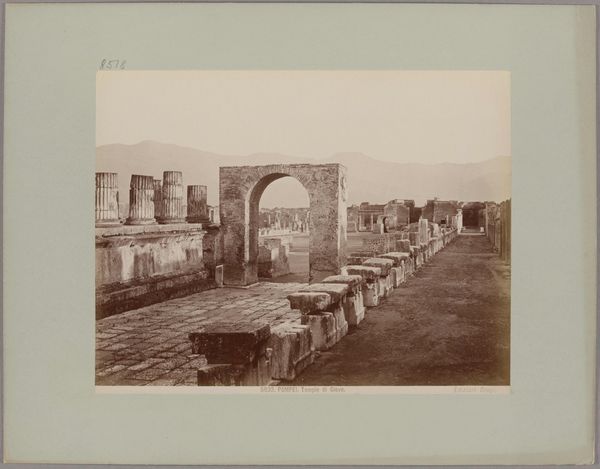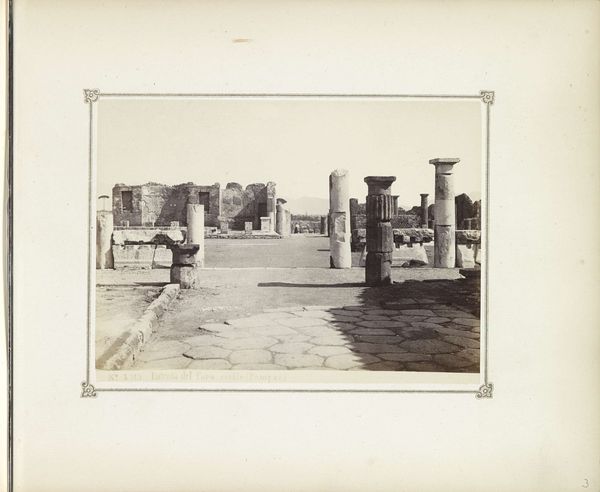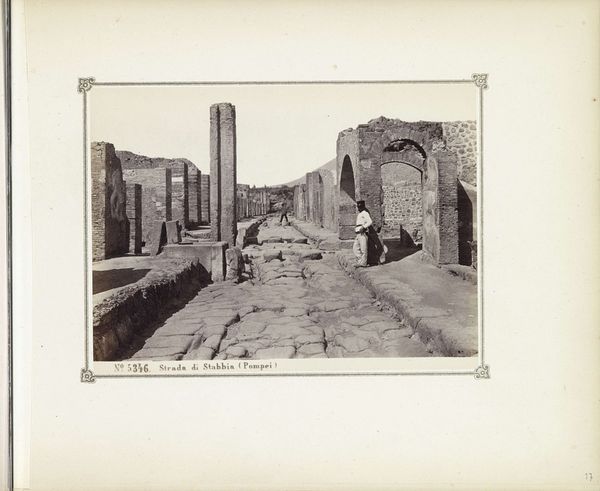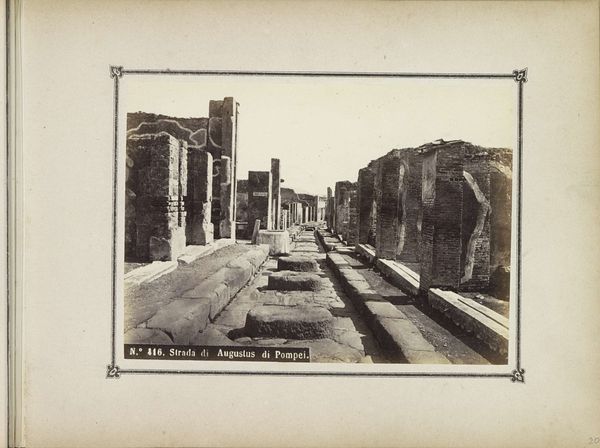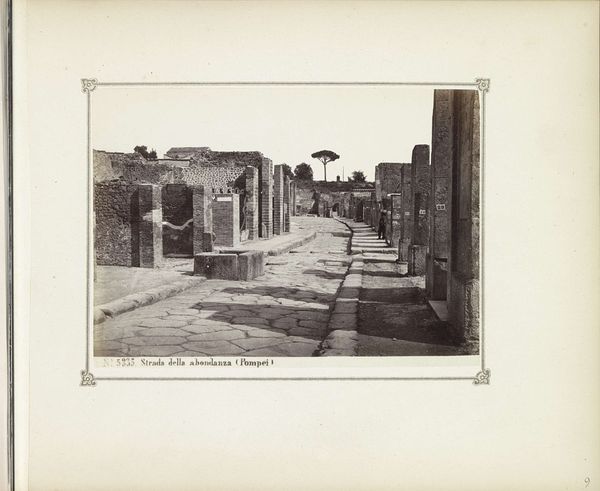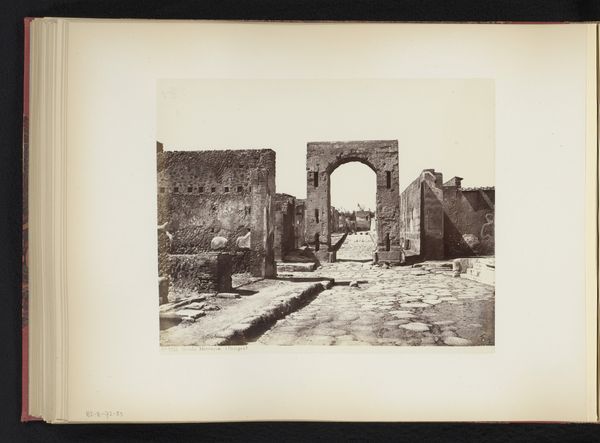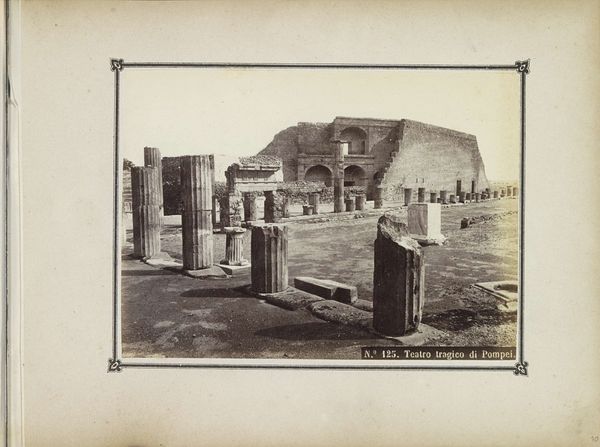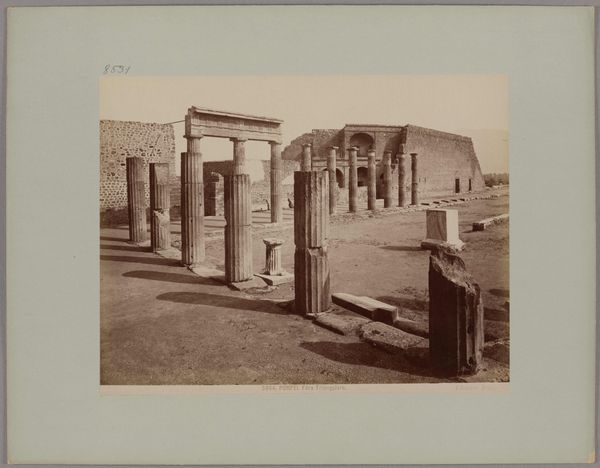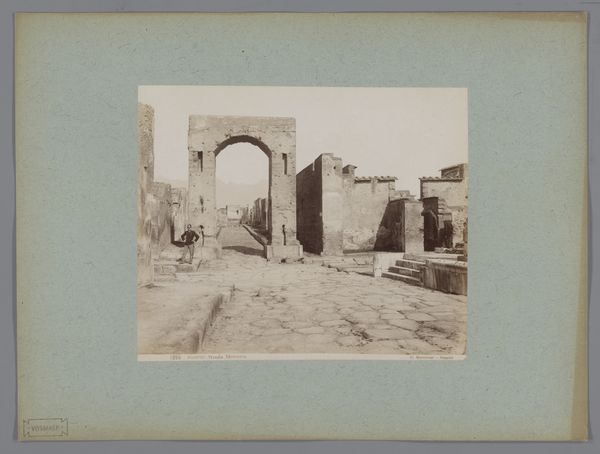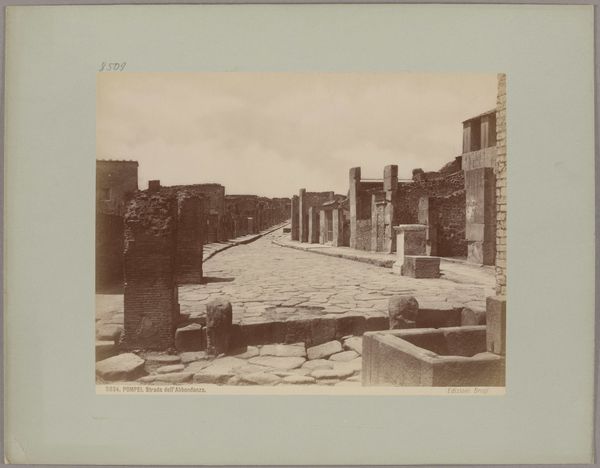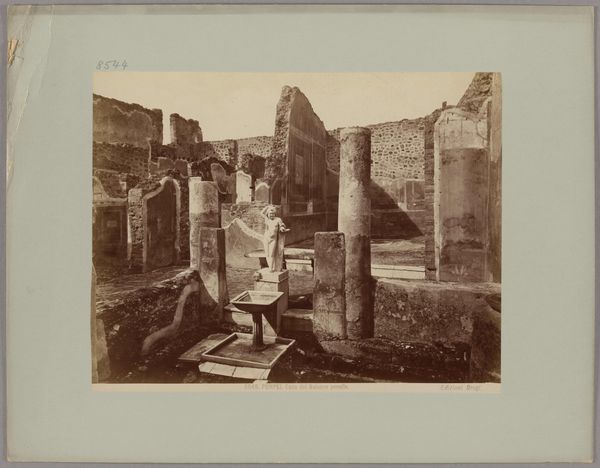
Restanten van het forum en de Tempel van Jupiter in Pompeï c. 1860 - 1900
0:00
0:00
robertorive
Rijksmuseum
print, photography, gelatin-silver-print
# print
#
landscape
#
photography
#
historical photography
#
ancient-mediterranean
#
gelatin-silver-print
#
19th century
#
cityscape
Dimensions: height 104 mm, width 141 mm
Copyright: Rijks Museum: Open Domain
Editor: Here we have Roberto Rive's gelatin silver print, taken sometime between 1860 and 1900, depicting the remains of the Forum and the Temple of Jupiter in Pompeii. It’s really striking, this photograph. It feels like such a stark portrayal of the past. How would you interpret the significance of this image? Curator: Well, consider the materiality of the photograph itself. This isn't just an image; it's a product of 19th-century technology, a gelatin silver print, a specific chemical process that renders this scene. What does it mean to document ruins in this way, fixing the past through a new industrial medium? Editor: That's fascinating, I hadn't thought of the printing process as a lens through which to view the subject matter. Curator: Exactly. Think about the social context too. Who was commissioning and consuming these images of Pompeii? This photograph speaks not only to the ancient Roman city but also to the Victorian fascination with classical antiquity and perhaps the morbid allure of disaster. The act of photographing ruins is also a form of claiming possession and consumption of its past. Editor: So the photograph isn't just showing us Pompeii; it's also telling us something about 19th-century society? Curator: Precisely. And look at the arrangement - the framing of the columns and the road. Think about the labour extracted from ancient resources versus industrial dark room work – that creates a tension. Also consider Rive’s artistic license in composing the photograph. It raises the question: whose perspective are we seeing? Editor: This makes me appreciate the print as more than just a visual record, it’s an artifact that reveals layers of history. Curator: Exactly! It’s about unpacking how materials, labor, and historical context converge to shape our understanding.
Comments
No comments
Be the first to comment and join the conversation on the ultimate creative platform.
